Best tubeless sealant: keep your tyres inflated and your wheels rolling
Prevent punctures and seal snakebites with the best tubeless sealant
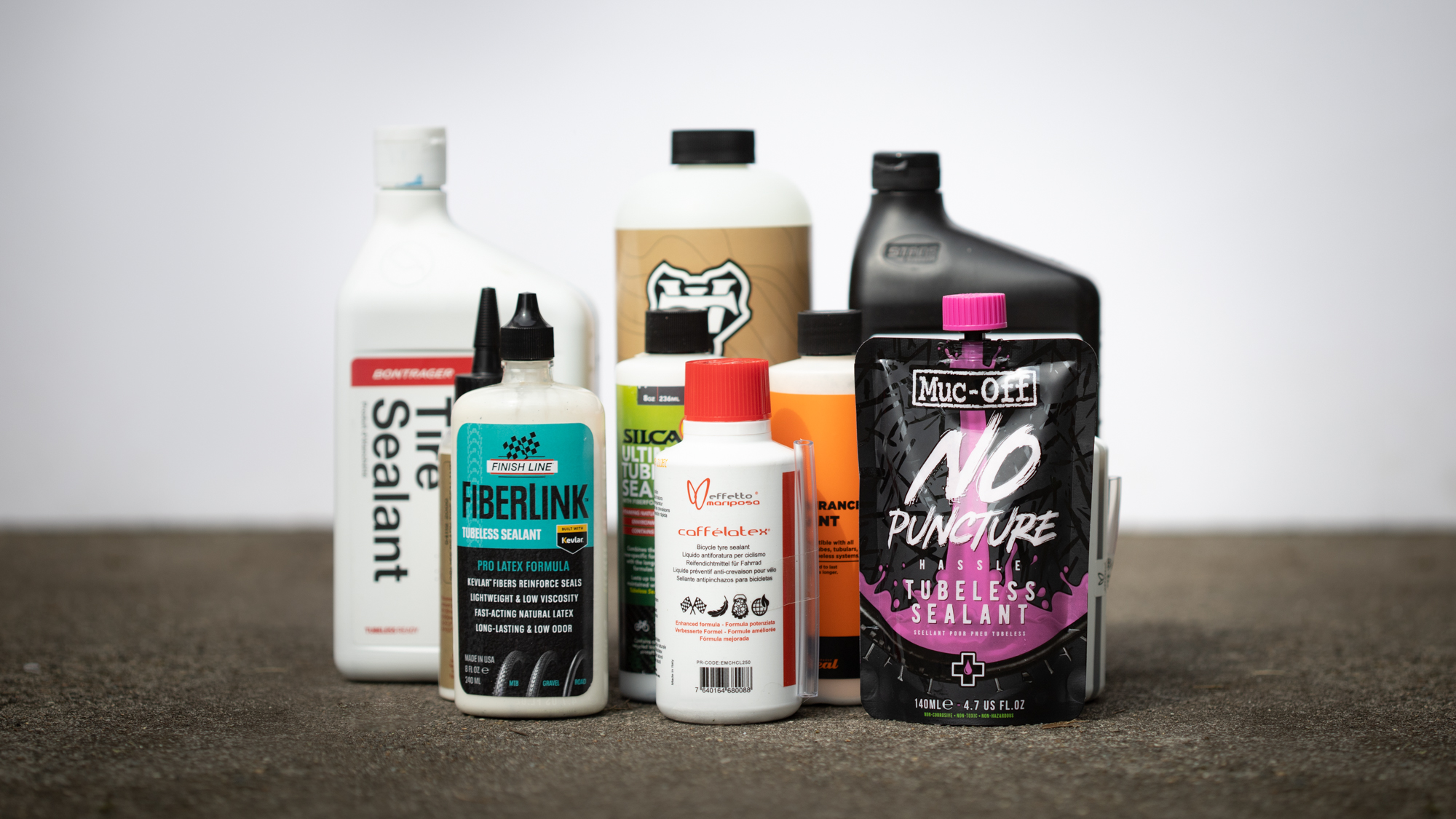
The best tubeless sealant will help you keep rolling, whether that's on road, gravel or singletrack trails. Almost all the best road bike wheels and best gravel wheels are tubeless-ready.
Tubeless sealant is a liquid that sits inside tubeless road tyres or gravel tyres. The tyres create an airtight seal against the rim, allowing you to ditch your inner tubes. When you get a puncture, the sealant will try to escape the hole, clog up in the process, and plug the hole so that you can keep riding. You might lose a bit of air, but often it seals without you realising you've even had a puncture.
What's more, switching to a tubeless road setup opens up a whole new world where you can stop worrying about inner tubes and run lower pressures, which makes for a cushier ride, better handling, and lower rolling resistance.
Invest in the best tubeless sealant for your needs and the chances are even greater that you'll keep rolling. But there are now many options out there, from thin to thick, designed for different puncture sizes, and with varying lifespans.
We've rounded up our choice of the best tubeless sealants for road and gravel bikes; including those which seal the best, last the longest, and are easiest to use. So, if you're itching to jump into the tubeless game but don't know where to start, keep reading for our top picks.
Best tubeless sealant available today
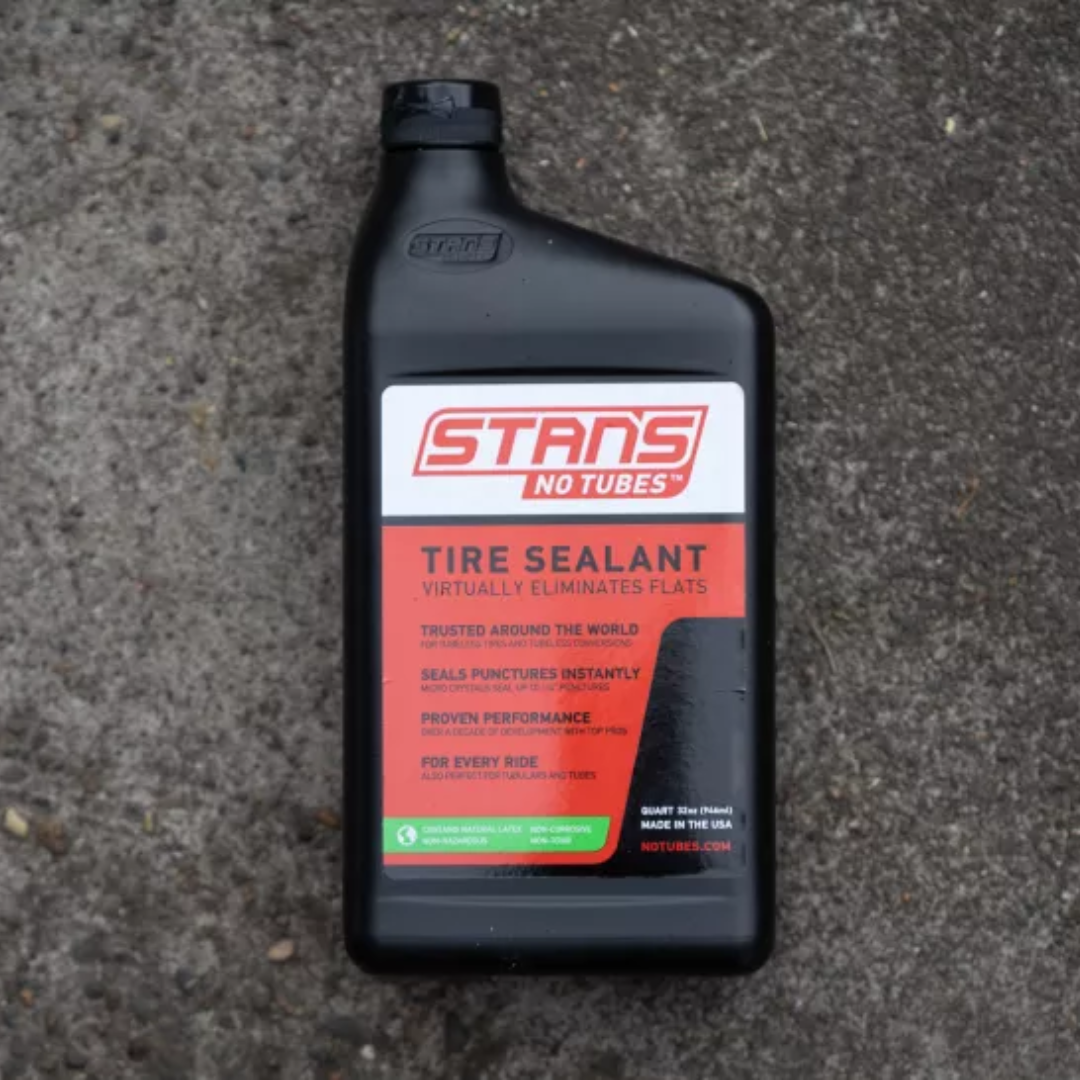
Easiest to find
+ The most widely used in bike shops
+ Not bothered by extreme temperature
- Acrid smell
- Needs thorough mixing
Arguably the most recognisable name in this list, Stan’s was among the very first to produce a sealant specifically for cycling, and offers two options: Original and Race. We've found that the latter working best for gravel, where punctures tend to be larger. It’s one of the most popular on the market, with the majority of bike shops using it in their workshops. This means if you regularly get your bike serviced, you don’t have to worry about incompatibility issues, as not all sealants work well together.
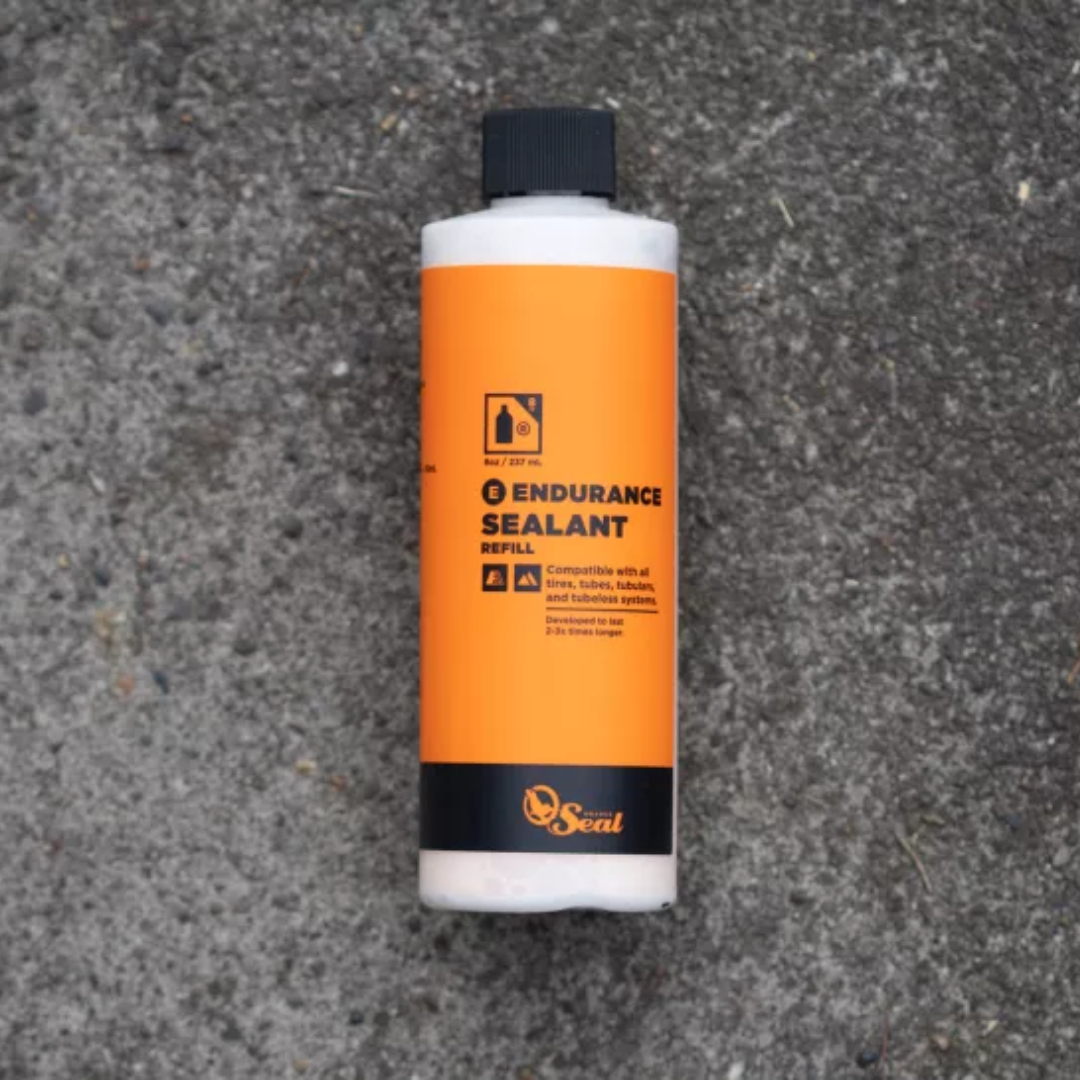
Best for longevity
+ Lasts well beyond the stated time range
+ Does a good job coating the inside of the tyre without clumping
- Difficult to get properly mixed
Another good option is Orange Seal, which is compatible with Stan’s formula. It also does a great job of handling punctures, and unlike Stan’s, we've found it doesn't ball up in your tyre as it dries. Instead, it puts a coating on the inside of the tyre that actually protects against air leakage through the casing of thin tyres. There's a regular and an endurance version, and in our experience, they last far longer than the manufacturer's recommendations.
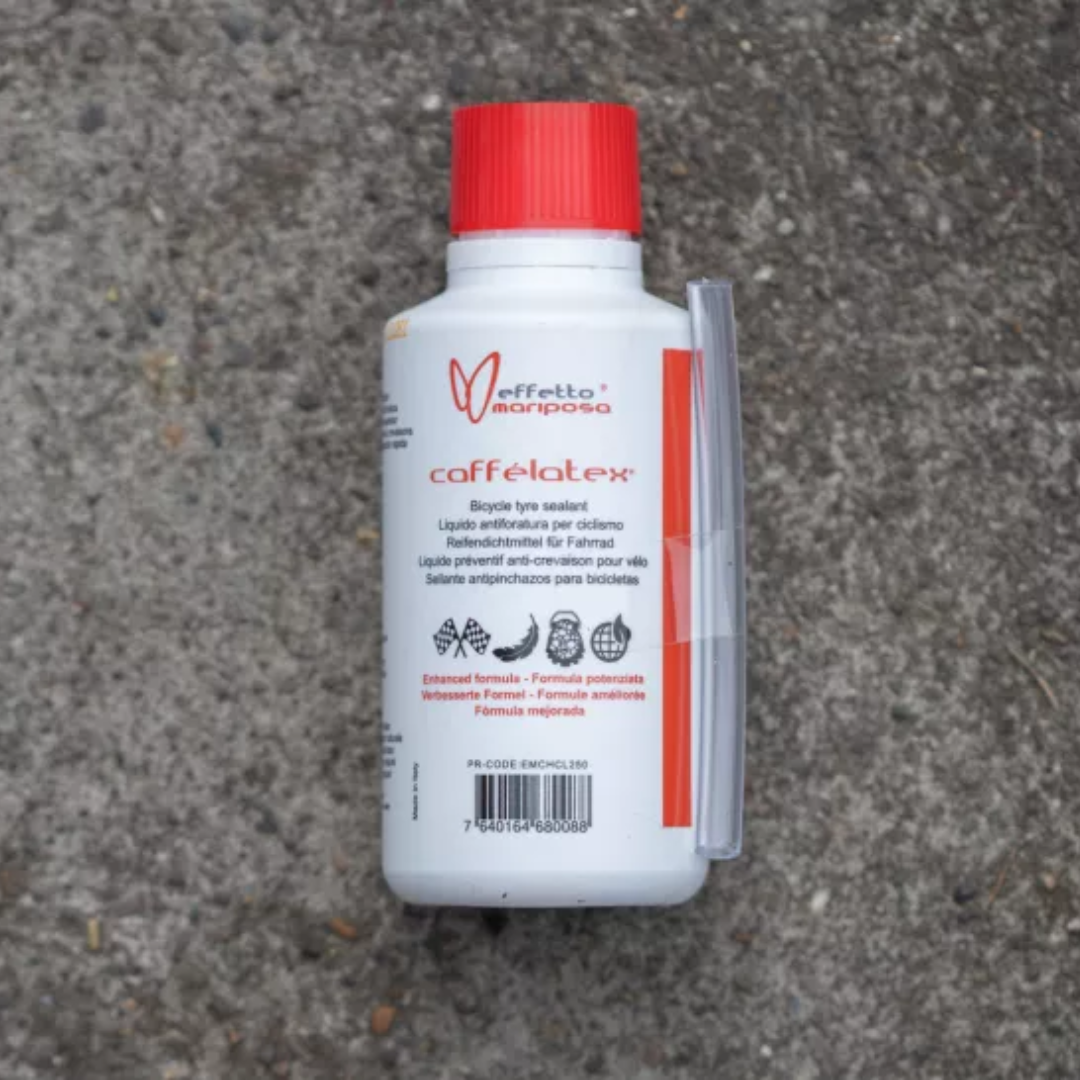
Best for sealing small holes
+ Foaming system gets to a puncture fast
+ Non-toxic and non-corrosive making it useable for tubular tyres as well
+ Customisable puncture protection with purchase of sealant additive
- Won’t plug the largest holes
What makes the Effetto Mariposa Caffelatex special is that it foams up and coats the inside of the tyre, and as the tyre rotates, this constant action of foaming keeps the sealant from sitting in one spot at the bottom of the tyre. In our experience, this means small punctures will seal faster and you'll never have to stop. The obvious downside is that it only works with small punctures, so it’s perfect for race day situations where the road is smooth and it's unlikely you'll encounter a large puncture.
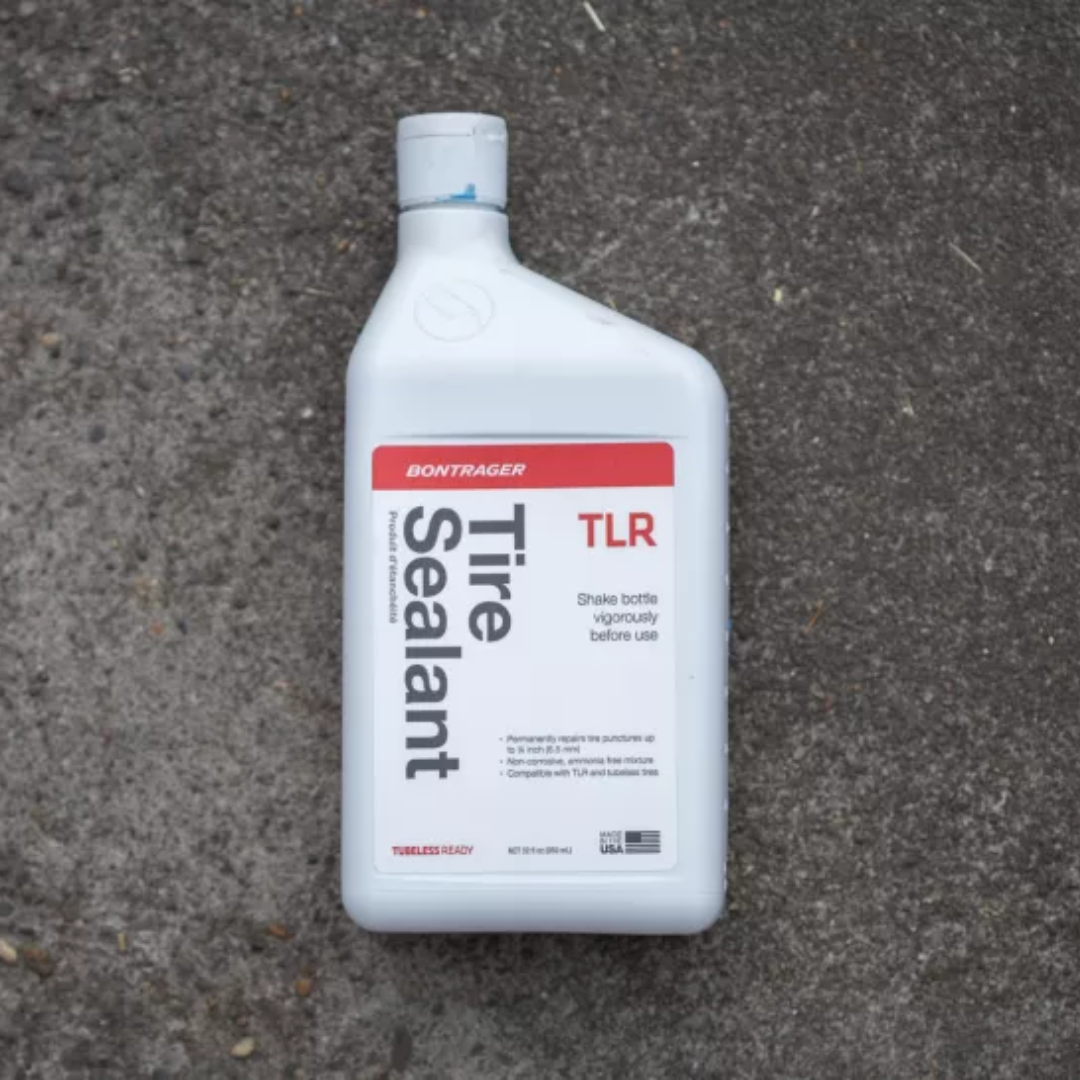
Best for spotting small leaks
+ Blue colour makes it easy to find small leaks
+ Ammonia free
+ Thin fluid does a good job keeping the solids mixed and available
- Smells awful
- Blue colour can also be difficult to clean
The Bontrager TLR sealant is by far the bluest of the bunch, and there’s a good reason for it. If you've got a small leak the bright colour is easy to spot against a tyre. Bontrager TLR is a very thin carrier fluid, even thinner than Orange Seal, with a good amount of solids in it. When we've had a flat, it's not been thick enough to chunk up and plug large holes but it does well with medium-sized holes where the thin carrier gets the particles to the spot in a hurry.
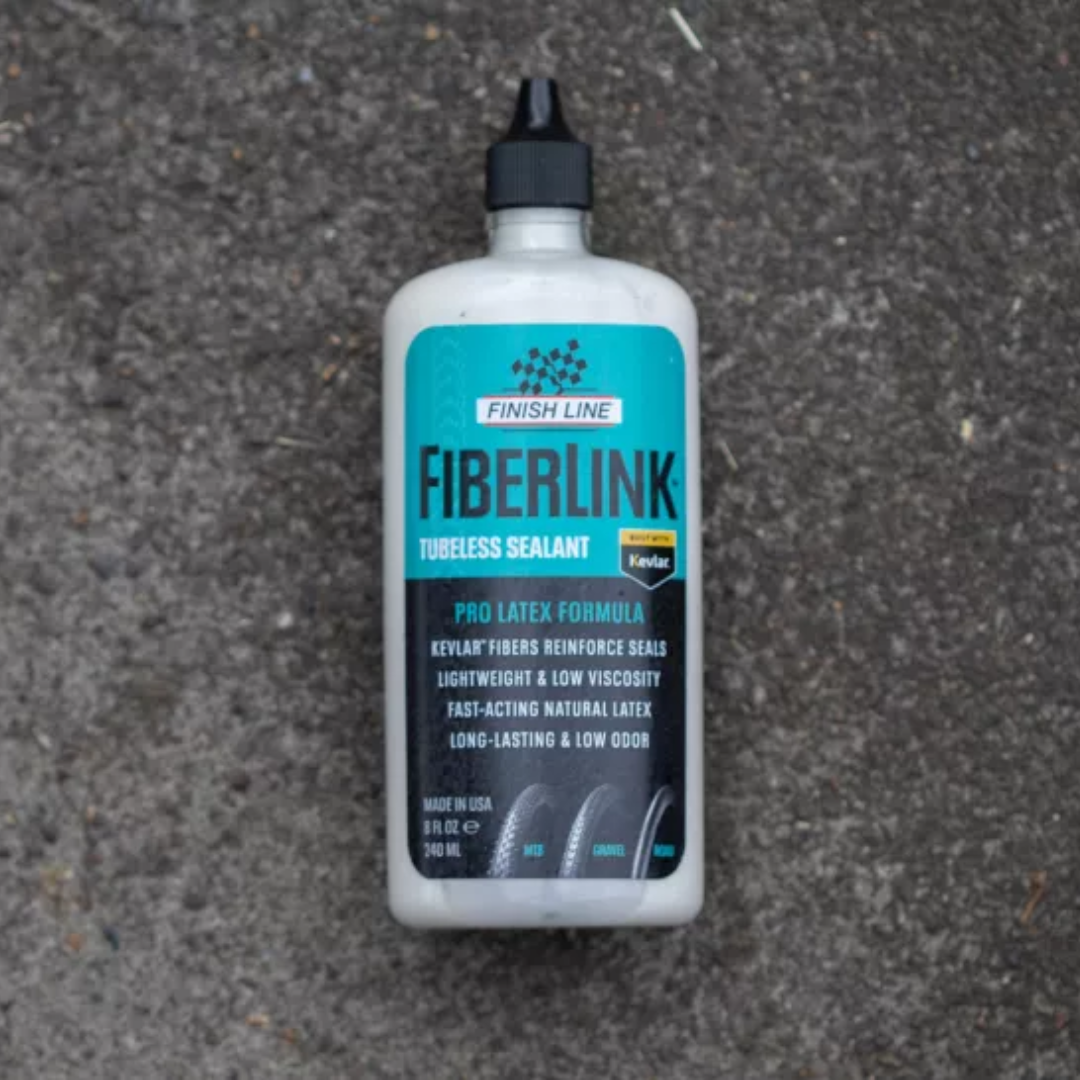
Best for larger holes
+ Natural latex
+ Doesn’t smell bad
+ Thin fluid does a good job keeping the solids mixed and available
- 8oz bottle is a squeeze bottle that makes it hard to use with an injector
Finish Line’s formula features Kevlar particles to help it seal larger holes. It’s thinned out by natural latex, in what is both an acknowledgement that sealant doesn't last forever, but also to help get the Kevlar to the puncture in a hurry. The only challenge with the current product is the smaller bottle uses a squeeze format. It might be helpful in some situations but we'd suggest using an injector such as the Park Tool TSI-1 and the nature of the bottle makes that harder.
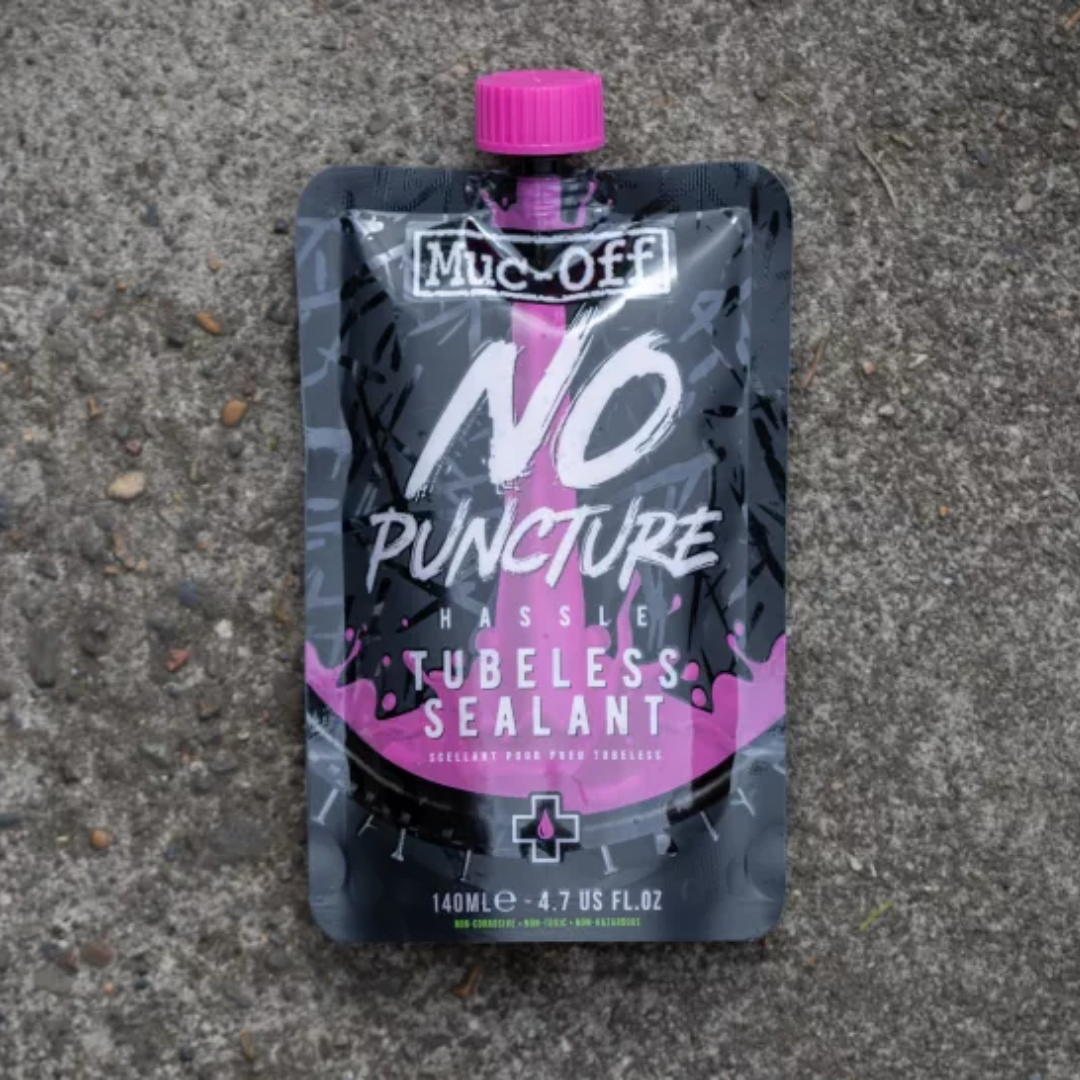
Best for CO2 users
+ Doesn’t ball up in the tyre
+ Ammonia free
+ CO2 compatible
- Won’t plug the largest holes
- Small bottles don’t play well with sealant injectors
Muc-Off is one of the leaders in tubeless technology, so it’s no wonder that its sealant is among the best. It might not work with the largest holes that can happen, but it offers plenty of features, and we've found the visibility under UV light handy for detecting hidden leaks. It’s also best if you use CO2 cartridges to re-inflate your tyres, because the extremely low temperature will render many sealants unusable, whereas this isn’t a problem for Muc-Off’s formula.
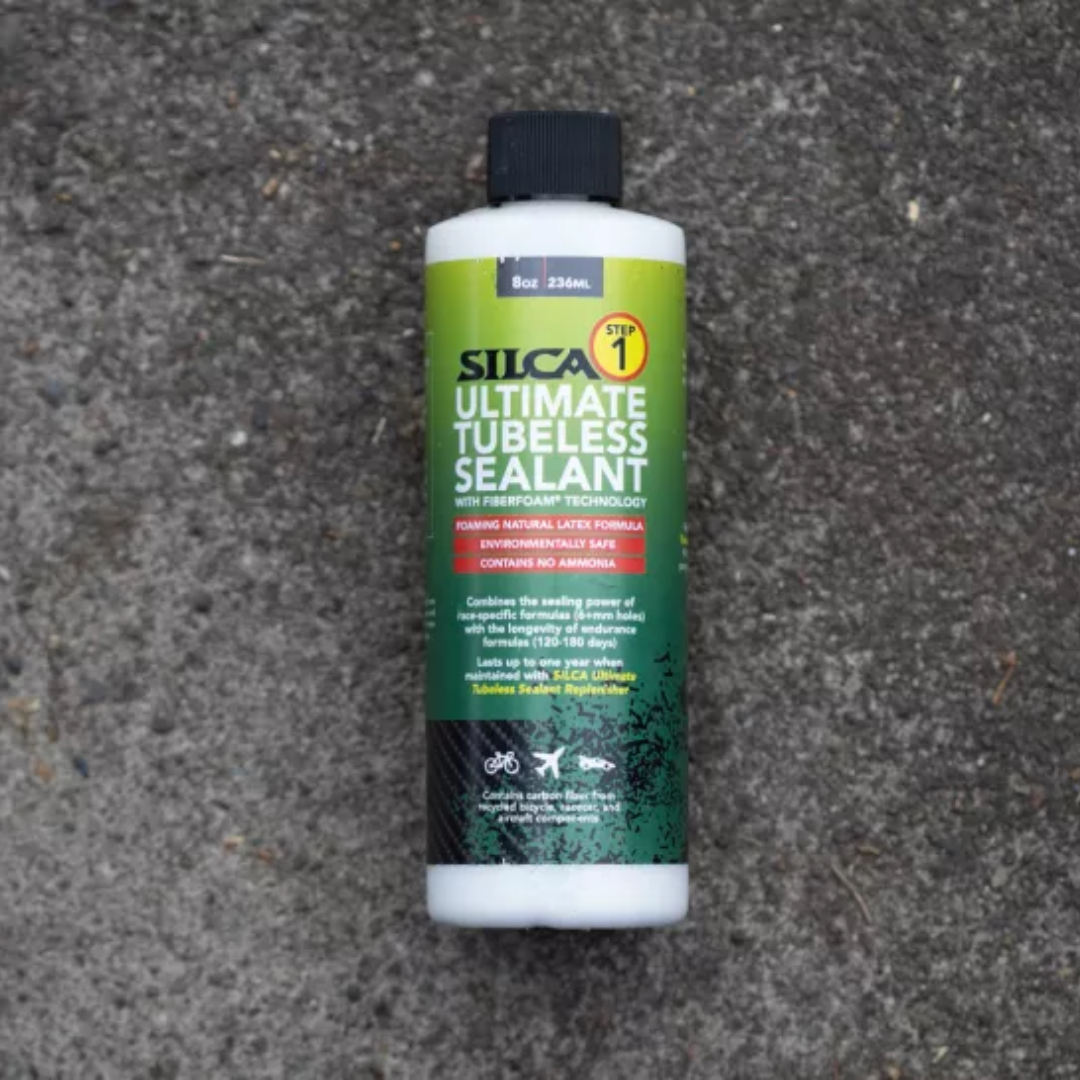
Best for the eco-conscious
+ Seals large holes
+ Removes carbon fibre from the waste stream
+ Allows a switch to the replenisher product for liquid top-ups
- Can’t be injected through a valve on initial install
Sealants are a mix of a carrier liquid, plus some kind of dissolved solid to physically clog a puncture. Silca Ultimate Tubeless Sealant with Fiberfoam uses recycled carbon fibre as its particle of choice. The thin particles are larger than what other brands use, which helps with better puncture sealing. While it's impossible to use an injector through the valve stem, Silca offers a replenishment product that adds more carrier without carbon fibre particles, which you can inject. We've found it a handy system to lower maintenance hassle.
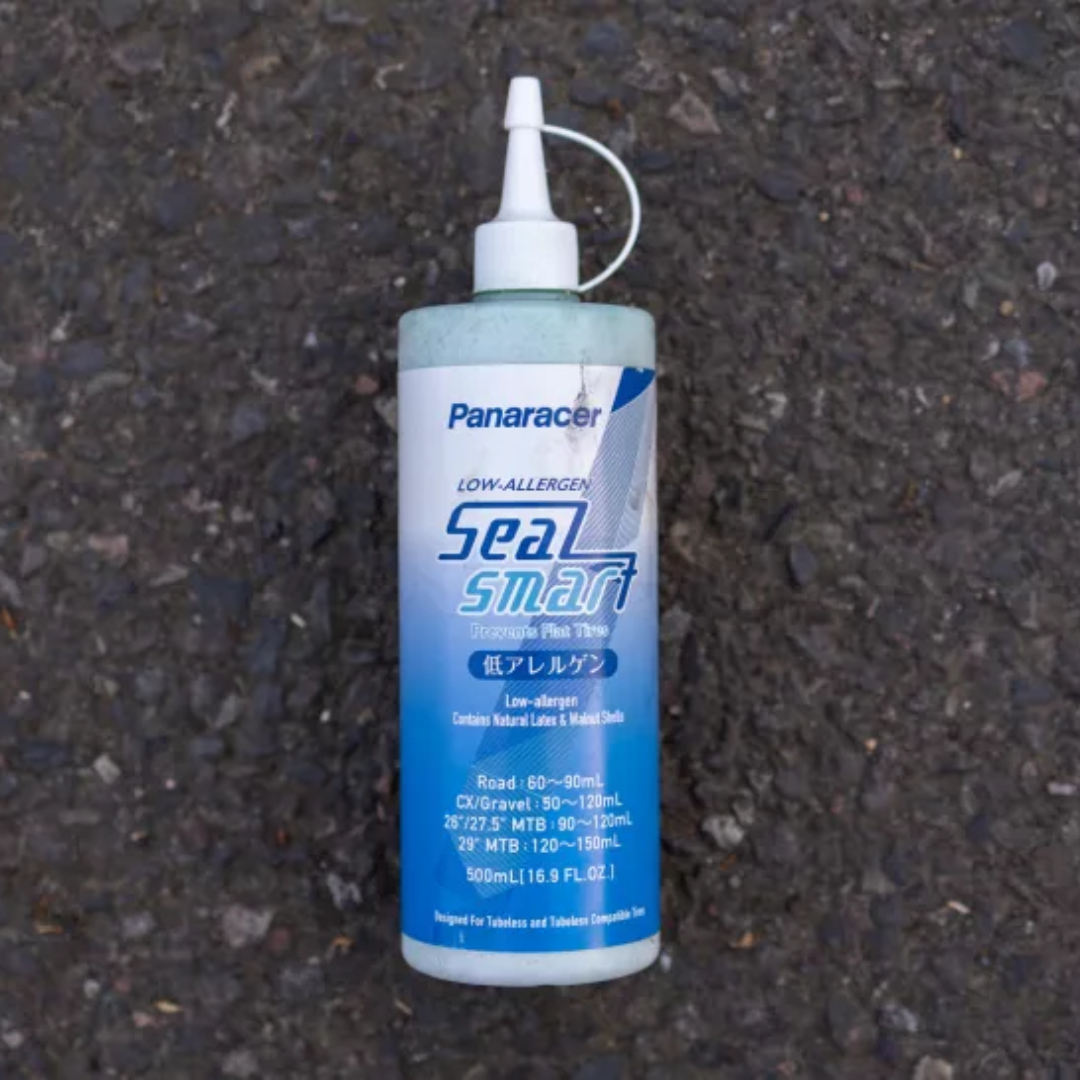
Best for cotton-cased tyres
+ Fully biodegradable
+ Highly viscous
+ Does a good job handling porous tyre casings
- Can’t be injected through a valve
Rene Herse, the king of thin casing, ultra supple, tyre design, recommends Panaracer Seal Smart. Panaracer uses ground-up walnut shells as its particles, making them another eco-friendly option, and has a very thick viscosity. It's better at stopping tiny leaks through the casing of supple tyres. The downside is yet another product that won't travel through an injection system; you are going to have to break the bead on one side of the tyre and pour the Seal Smart in.
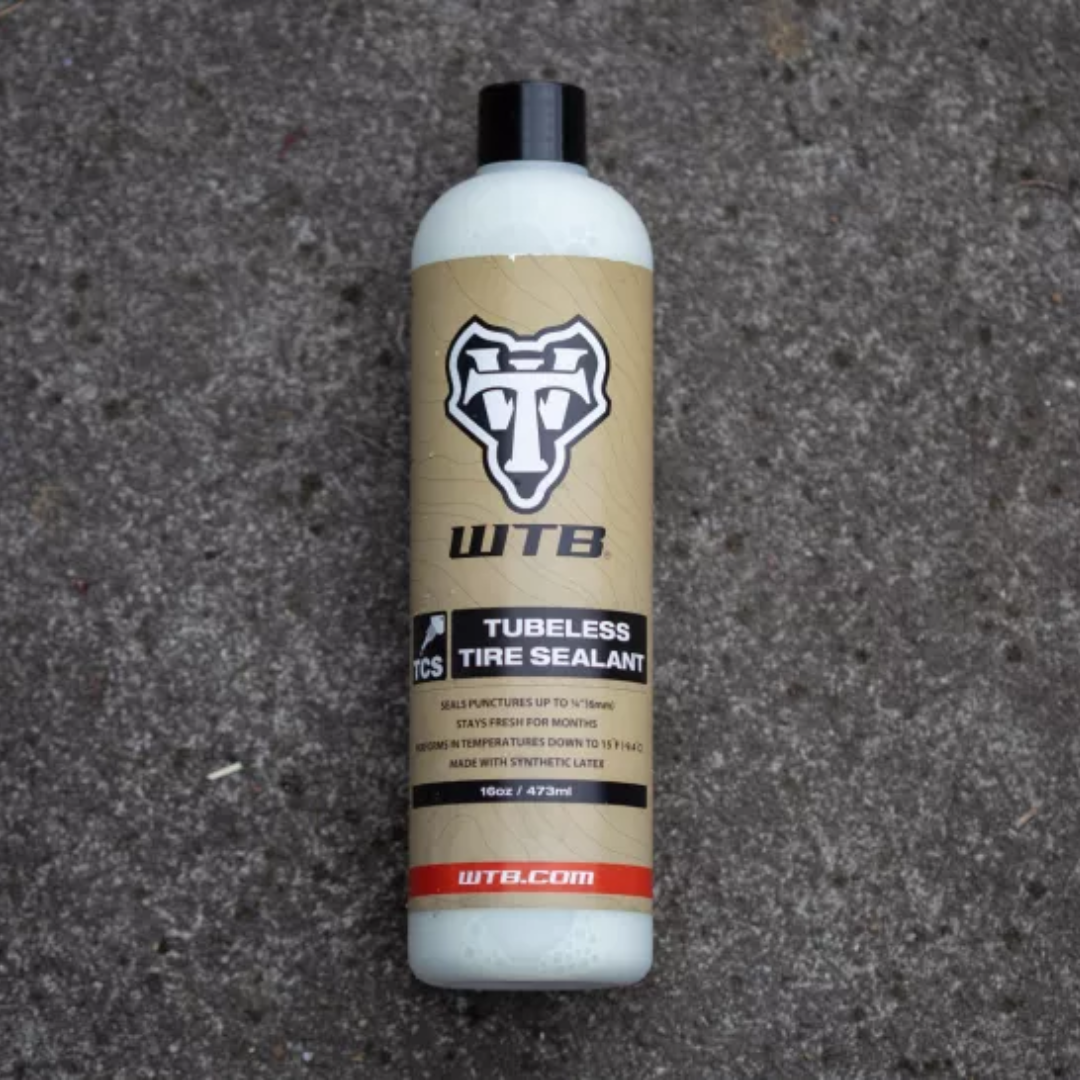
Best for winter riding
+ Ammonia free
+ More synthetic latex and less carrier designed for evaporation
+ Better performance in typical ride temperatures
- Can be difficult to inject
WTB uses more synthetic latex and fewer thinning agents than other sealants, which means less evaporation is needed in the temperature ranges people actually ride in. If you've got epic winter rides planned for rainy days above freezing, this is a great choice. We've found in practice what all this means is a thick sealant. You’ll want to make sure your valves aren’t too small, as some valves narrow as they open into the wheel, while others don’t.
How to choose the best tubeless sealant
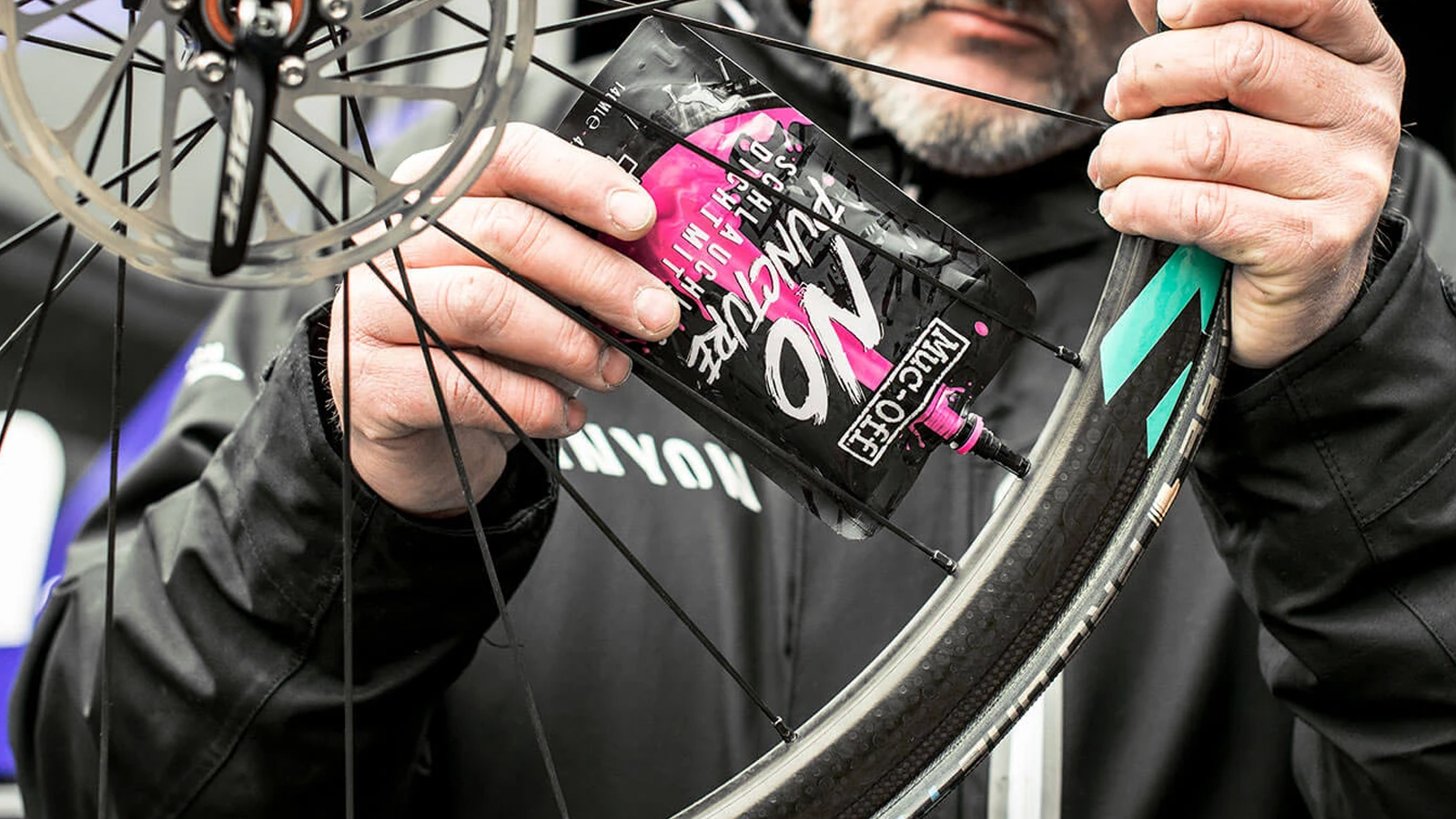
What is tubeless sealant?
Tubeless sealant is a liquid which sits inside your tyre. As you ride, it distributes to coat its inside surface. When first setting your tyre up tubeless, it helps to seal any small leaks between the tyre bead and the wheel rim, also around the valve, so that your tyre will retain air pressure.
It has the secondary benefit, if you get a puncture, of helping to seal the hole in your tyre. The sealant will form a plug in many punctures, so that the tyre retains air.
Tubeless sealant is made up of a carrier liquid with suspended particles. Most often the liquid is latex, either natural or synthetic, although there are alternatives. There may be ammonia or another component added to keep the sealant liquid, prevent it drying up and make it more cold stable.
The particles are often proprietary and can be any number of things, as you'll see from our choices above.
Does tubeless sealant always seal a puncture?
Not always.
Latex has the advantage that, once it forms a plug, it will dry out and form a semi-permanent seal, although in some cases it may take a day or two for the tyre to retain air at normal road or gravel tyre pressures.
With larger holes, you may find that the latex plug blows out of the hole until it's fully set. In such cases, we've ridden some very squishy tyres home. The next day, the tyre can often be inflated back to full pressure, although you may just find a pool of sealant on your floor in the morning.
If the sealant doesn't work successfully when you're out riding, there are a couple of options. The first is to insert a tubeless plug, which helps to fill the hole so that the sealant can coagulate around it.
Many of the best bike multitools now include a tubeless tyre repair tool, or you can carry a separate tool such as a Dynaplug or Stan's Dart.
The second option is to put a tube in. It's advisable to carry either a spare tube or tubeless plugs and a tool, even if you'll seldom use them when riding tubeless.
How often do you need to add more tubeless tyre sealant?
While some brands provide expectations for the lifespan of their sealants, others don't bother. Finish Line, for example, states, "Tire porosity varies greatly from tire to tire. Porosity and climate affect sealant longevity. Refresh as needed."
It's a clever way to avoid being held responsible if customers have a different experience than what's advertised, but it does hold some truth. Different tyres, climates, and riding conditions will inevitably lead to diverse outcomes. If you're after a one-size-fits-all rule, checking your sealant once a month is a wise move, but in our experience, it often lasts much longer. In fact, you'll probably find yourself needing to replace the tyre before even thinking about swapping out the sealant.
How do you check tubeless tyre sealant?
There are a couple of ways you can check your sealant situation: One option is to use an injector to suck out whatever's left in there to get a better idea, or just shake the tyre and listen to hear if there's any sloshing. You can get creative and use something small and thin as a dipstick to see how much sealant you've got. The easiest method though is to flip the tyre so that the valve is at the bottom and leave it for about 10 minutes. Deflate the tyre and remove the valve core then push it flat against the ground. You should get a bit of sealant leaking out of the valve; if not, it's time to add sealant.
How much tubeless tyre sealant do you need to use?
There’s no exact science to this, although Finish Line, again, has recommendations on its bottle. Effetto Mariposa actually goes into the most detail.
The idea is to balance enough sealant that it gets to a puncture when it needs to but not so much that you carry excess weight. Bigger tyres need more sealant and you can check the detailed table that Effetto Mariposa lays out to get an idea. It is worth noting though that other brands tend to recommend higher quantities. The general rule of thumb is 60ml for road tyres under 30mm and more as you go up in size.
Can different brands of tubeless tyre sealant be mixed in the tyre?
The simple answer is no but there is a long answer too. We've had a lot of experience mixing Stans and Orange Seal and it worked out fine. That's only our anecdotal experience, though.
Those two brands happen to be pretty widespread and other people have reported similar results. Other brands may mix just fine as well, but no brands are testing others and making recommendations. There's no incentive to do that from their point of view. So, we can't tell you that in every case it won't work, because there's no data and every brand recommends not mixing. It's best practice not to do it.
How do we test tubeless sealant?
The best tubeless tyre sealant is a lot like the best tubeless road tyres in that no two situations are the same. There have been times when we've gone an entire season without getting a single flat and there have been times when every ride has meant a new flat tyre.
But beyond just stopping punctures, a good sealant has to be easy to live with. With most tyres and wheels designed to be set up tubeless, we're constantly swapping out the inner tubes when reviewing bikes.
We get to know which brands of sealant are easiest to use for the initial set-up, with handy packaging and good sealing performance.
Most tyres require a top-up or at least a check during a bike's review period, so we come to learn which brands last the longest and which dry up after a couple of months. And, yes, we do get flats and so have first-hand knowledge of how well the best tubeless sealants work.
We've put together a list of the best options pulled from our experience that not only do a good job of stopping leaks but also have a unique selling point. Something that makes them perfectly tailored to a specific type of rider. Everything here is a good choice, look for what matches your needs.
Get The Leadout Newsletter
The latest race content, interviews, features, reviews and expert buying guides, direct to your inbox!
Josh hails from the Pacific Northwest of the United States but would prefer riding through the desert than the rain. He will happily talk for hours about the minutiae of cycling tech but also has an understanding that most people just want things to work. He is a road cyclist at heart and doesn't care much if those roads are paved, dirt, or digital. Although he rarely races, if you ask him to ride from sunrise to sunset the answer will be yes. Height: 5'9" Weight: 140 lb. Rides: Salsa Warbird, Cannondale CAAD9, Enve Melee, Look 795 Blade RS, Priority Continuum Onyx
